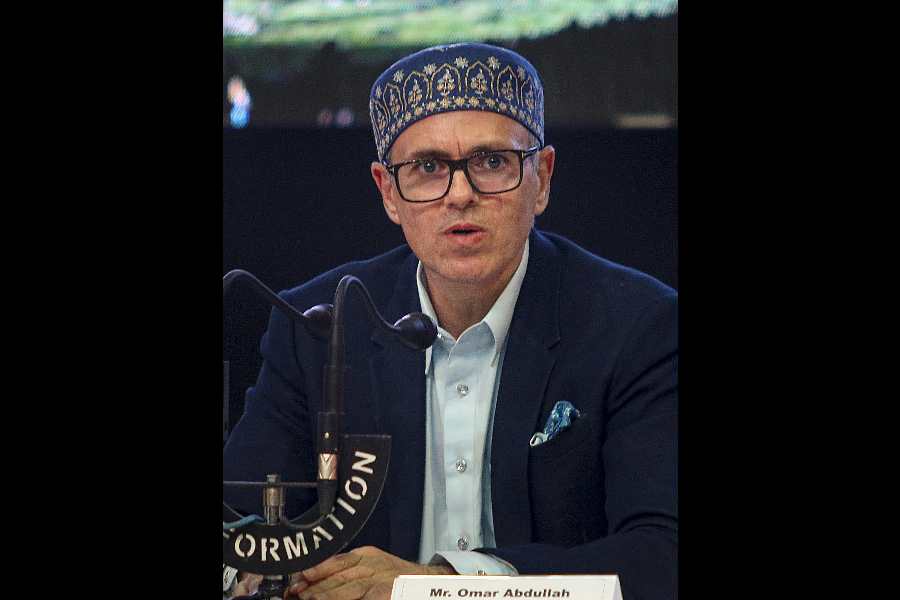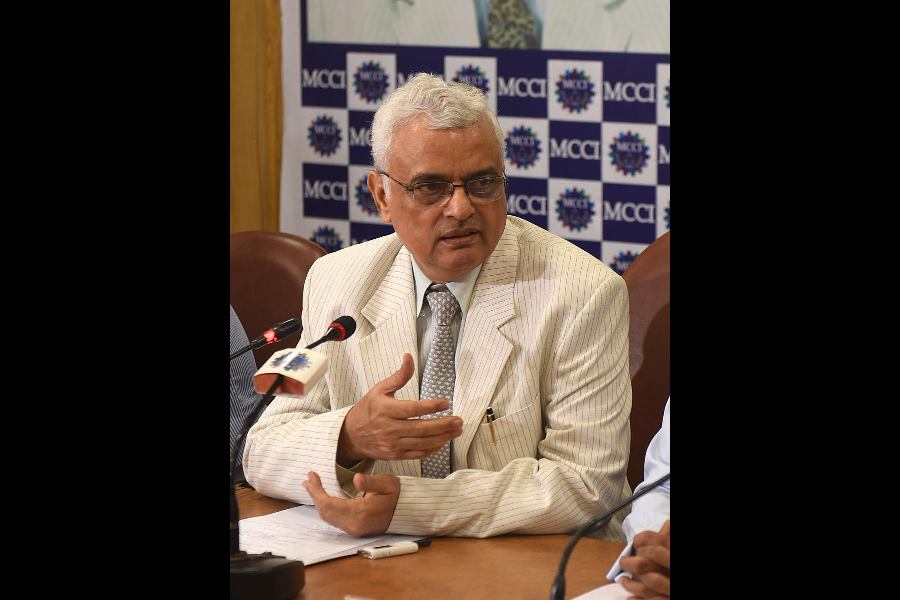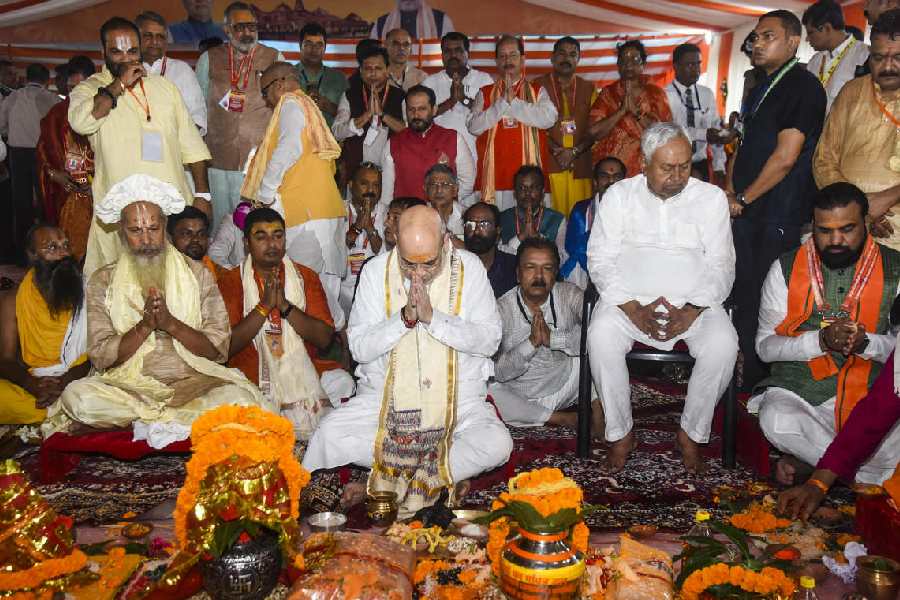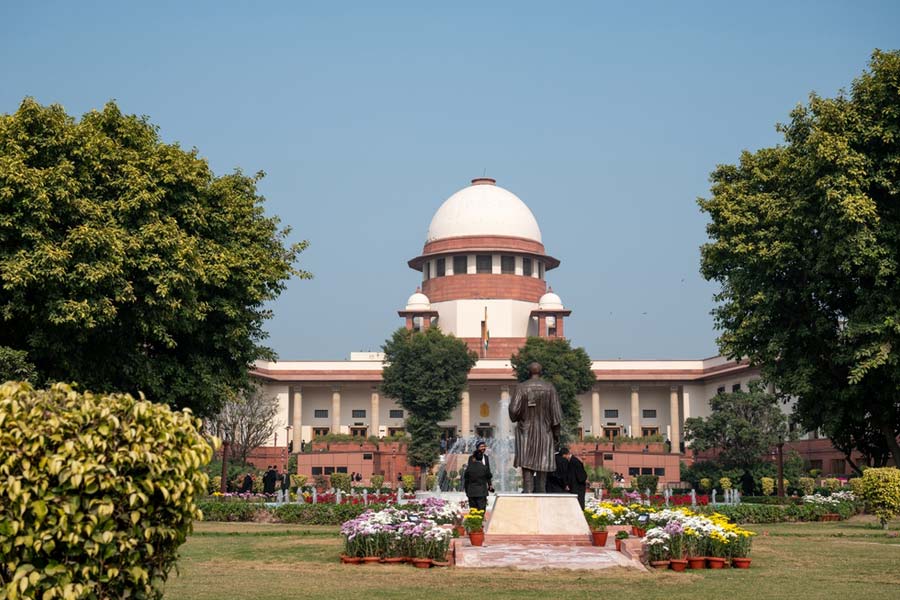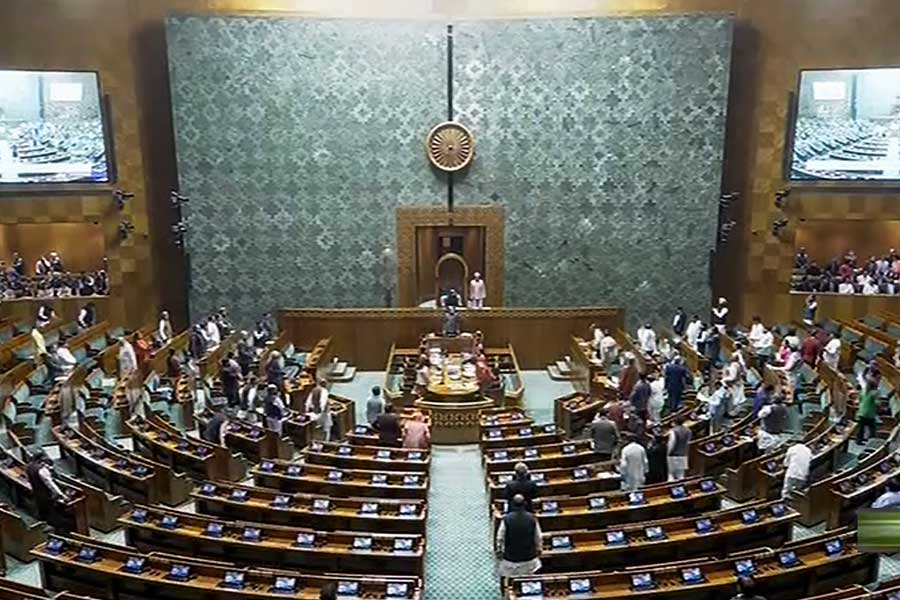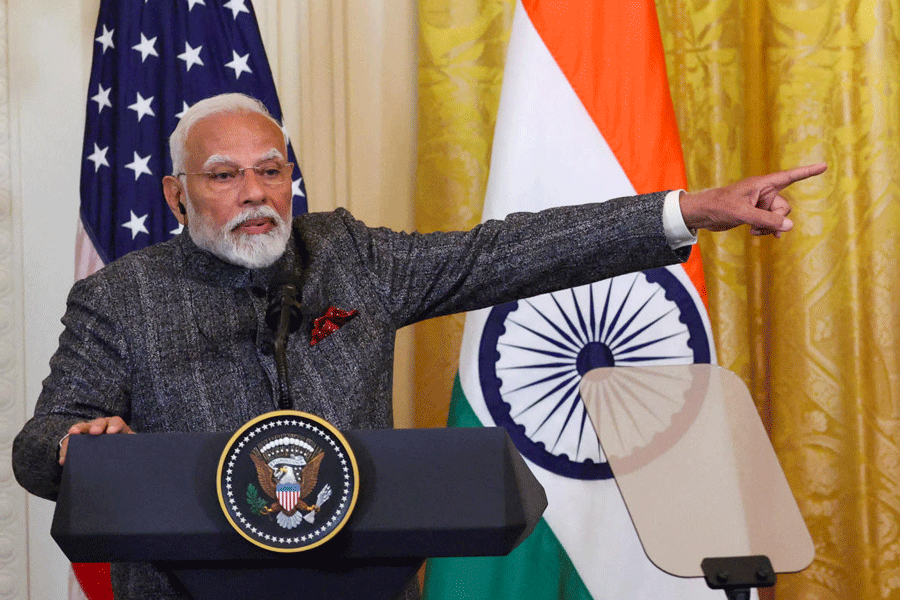
Five years after Bombay Talkies brought them together for the first time, Zoya Akhtar, Karan Johar, Anurag Kashyap and Dibakar Banerjee are back with Lust Stories, a Netflix original. The short films, starring Radhika Apte, Bhumi Pednekar, Manisha Koirala, Sanjay Kapoor, Neha Dhupia and Vicky Kaushal revolve around ‘the themes of love and lust’.
t2 met the four directors seated around a table laden with food — a bowl of chicken curry and naan, vegetarian club sandwich with a mountain of French fries and kachoris with chutney. It’s way past lunchtime and Anurag confessed to being “borderline hangry”. While he and Dibakar give their single-minded focus to the food in front of them and Zoya dug into packed lunch from home (a keto meal of chicken and peanuts), Karan tried very hard to not eat the fries that were kept right in front of him. In between food and many inside jokes, the four directors spoke about love, lust and everything in between.

Bombay Talkies was made to commemorate 100 years of Hindi cinema. How did Lust Stories come about?
Karan Johar: We had so much fun the last time, more so after the films were made and we started promoting them. I got to know Dibakar well for the first time and I knew Anurag and Zoya from before. We just decided to repeat the experience. Individually as well, it was liberating to do these shorts. We had one big meeting to work out what we wanted to do next, and then decided to have one common theme — love and lust. That eventually became #LustStories and our individual interpretations of that. I have to say that a lot has happened in these five years, but the four of us are the same people. I say that in a good way — headspace-wise, madness-wise, eccentricity-wise.... What’s not changed are Dibakar’s idiosyncrasies, Anurag’s social media distraction, Zoya’s placard for human rights… not sure what it is for me.
Anurag Kashyap: (Putting down his phone) I was not distracted by social media! I was only talking to my daughter.
Zoya Akhtar: I feel Karan can really be on point and say whatever has to be said without offending anyone, and getting the point across.
Karan: The idea was to say that all of four of us were glorious extensions of ourselves and in a new phase of our lives, but with the same personalities and ability to tell stories. I really hope we get to do this every couple of years because it’s hugely liberating.
Dibakar himself said his was a relationship film that he’s not attempted before. Zoya’s short in Lust Stories is my favourite Zoya Akhtar piece of work. When I saw her short, it was not just watching the strength and evolution of a filmmaker but also the ability to be quiet and tell a story. When I see Anurag’s film, it’s amazing to see how much method there is to his madness, because he’s an ad hoc piece of talent who goes on set to create. He doesn’t come with structure, form or narrative — it’s like he gets a thought while he’s in the shower, gets a weirder thought when he’s on set, puts it all together to make a weirder film which then gets weirdly loved! (Laughs)

Can each one of you talk about what triggered your stories?
Anurag: Mine was totally triggered by a woman I loved. The story came from there. And when you love someone, you don’t want to judge them. I was mortally afraid of judging her at any point because if I judge her, the audience watching would judge her as well. So, I just had to let her flow, and Radhika (Apte) added to it. Radhika herself is a very strong-minded woman, always figuring things out and not afraid to do so. Why should our characters be the kinds who’ve figured things out? I don’t think I’ve figured out my shit!
Zoya: For me, it was interesting to see it in a social construct that’s specifically India. Love and lust are such natural emotions, but when you add society, conditioning, class and caste, what are the boundaries that get set? What are you allowed and what not? There is a distinction —you can lust for a person but can’t love, and that’s just bizarre. That’s what I wanted to explore.
Karan: I don’t know what the source of the narrative was, but having been a single person for so long, you’re somehow privy to friends and their lives — they tend to talk to you about their lives because you don’t have too many stories to tell of your own, about marriage and relationships with your children. So, you listen to men, to women, their love lives, their sex lives, everything.
And many a time I have found, even in urban India and among my friend circle, that women’s sex lives don’t give them a sense of satisfaction, that they didn’t feel it’s necessary for their spouses to take them there, to that zone of pleasure. And that was one of the trigger thoughts for my story. Of course, I didn’t base it in the environment I’m talking about. But if that is the case in affluent, educated, knowledgeable homes, what must be the case when people come from a completely different demographic of society where it is even less important what a woman feels? I felt I wanted to explore a narrative, but I didn’t want to keep it heavy-handed. I wanted to treat it lightly, because communication penetrates deeper and wider when you use humour.
Dibakar Banerjee: The trigger would be what’s permitted and what’s not — when you look at that, you get the insight. For example, when you walk into a Parsi restaurant, you see, ‘Absolutely no combing’ in front of the mirror. When you get into it, you realise it’s like a detective story to find out what prompted that sign.
So, when you hear, ‘Thou shall not covet thy neighbour’s wife,’ there’s an apparent reason — you can’t let society break apart. But then thou shall also not bombard us with stories of everlasting love, of everlasting youthful bodies, of everlasting sexual experiences, to sell everything from shoes to jeans. So, we are told not to do, yet encouraged by those images simultaneously. The woman in the story might have been told lots of things, but at any given point of time her husband also wants her to be a cool hostess for his investor and is very mortified when she cries in front of him. It’s all these contradictory things that made me want to figure out if there’s any congruence to this thing called marriage.
It’s interesting that each of your films is told from the female point of view!
Karan: It wasn’t planned at all. We’ve discussed how beautifully coincidental that is. None of us knew what the other was doing. We found out when we saw all the four films at Zoya’s house. Her couch is now our hot spot — some traditions shouldn’t be broken. We enjoyed it the first time, so we did it again and we plan to so the next time as well.

It’s the first Netflix film for all four of you. What are the pros and cons of the medium?
Karan: Academically, the first big pro is large medium, many countries, big exposure, wider reach. Secondly, there’s no box-office pressure, no trade governance, no accountability — the burden’s off the filmmaker. The third big pro is pushing the envelope and boundaries without any internal or external censorship. The fourth is that all the other three pros give you a humongous sense of liberation.
The cons — we are cinema makers, we love the feeling of cinema audiences, of sharing our film, that’s the syntax we grew up with, the love we have for the medium. You suddenly feel the loss of that. All the things you fear are also the things that give you the adrenaline rush. The theatrical love that you’re used to, you don’t get — that’s the big con. If I’ve made a huge film that’s a spectacle, I’m not sure I’d be happy just putting it on a digital platform.
Dibakar: I have a feeling that the traditional way of filmmaking, where the director presents the film on a big screen, does give the director a sense and place of importance. When you come to a film being consumed anywhere which can be stopped anywhere, to take a leak or to have dinner, what happens is that the director to some extent is reduced in importance. When a director calls you into a darkened room and tells you this is where the film begins and this is where it ends, he controls the experience. There are no other disturbances and there is something to be said for that level of solo engagement with your work. The chances of the details and nuances of what you’re telling may get reduced by the lack of silence and the absence of a controlled environment. Therefore, I think the techniques of filmmaking will change when you reduce the screen size. The way you tell your drama will change.
Alternative formats have always come and challenged the big screen and today, vanilla theatrical screenings face a challenge from the Internet. But spectacles are like never before, and they’ll become a little more important for the big screen.



